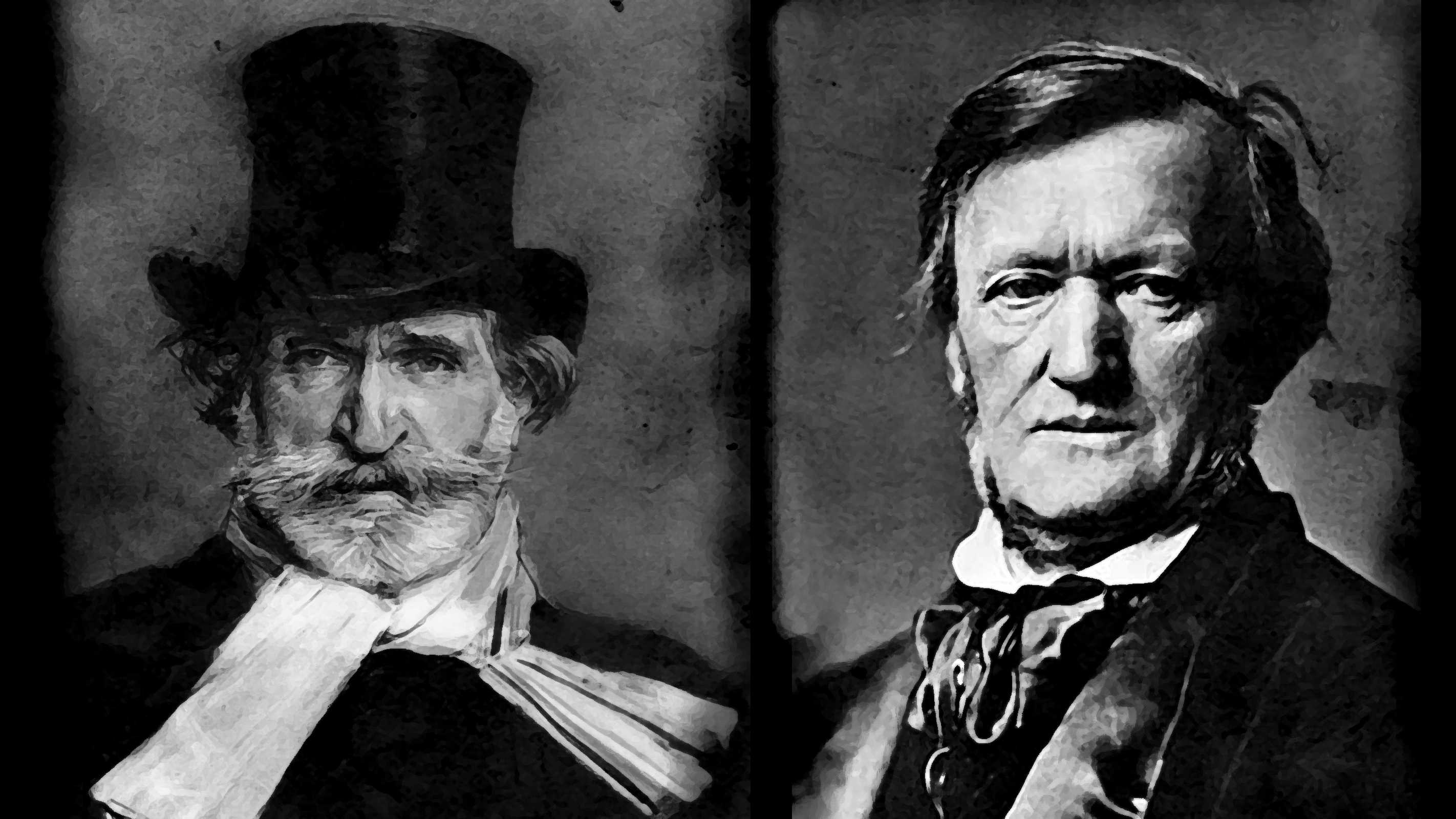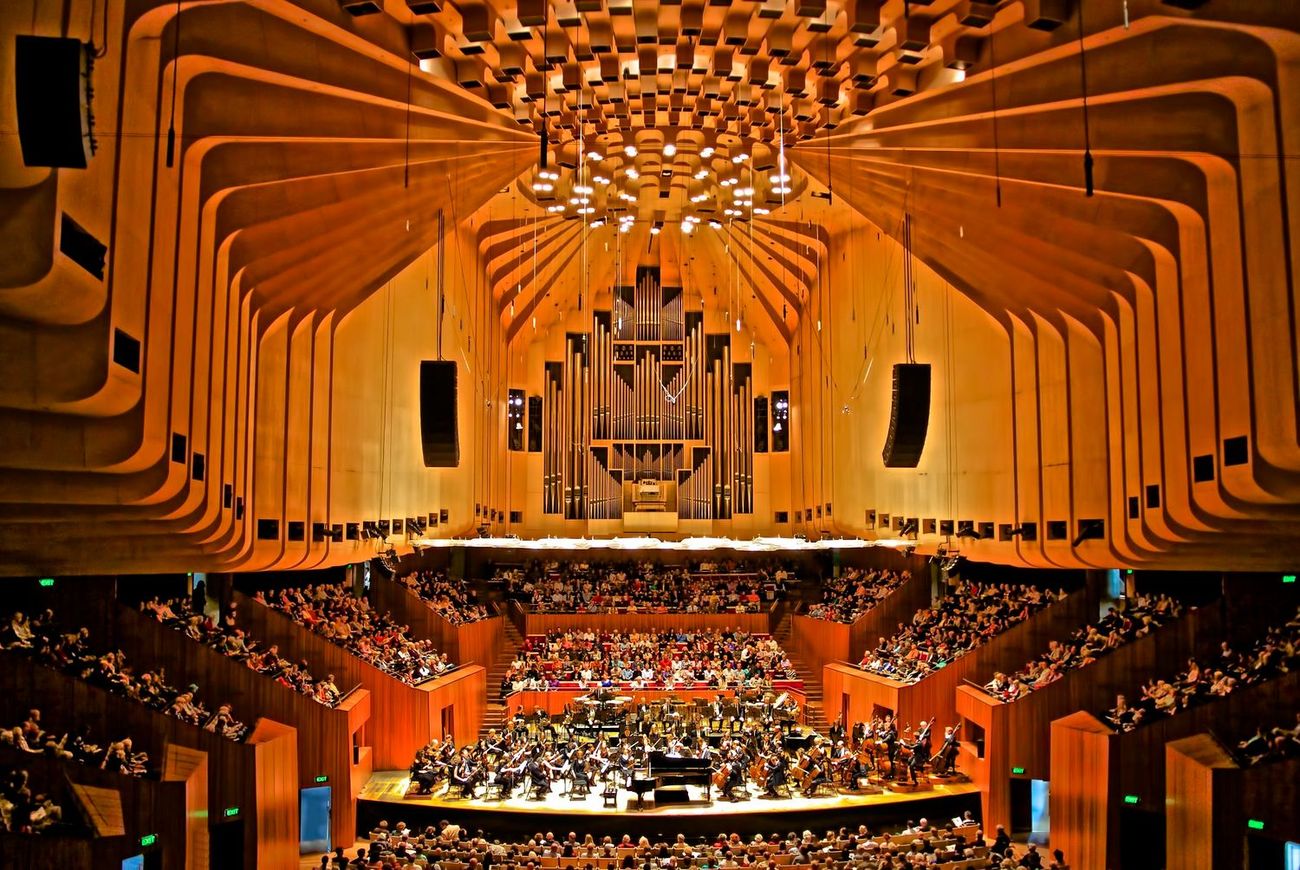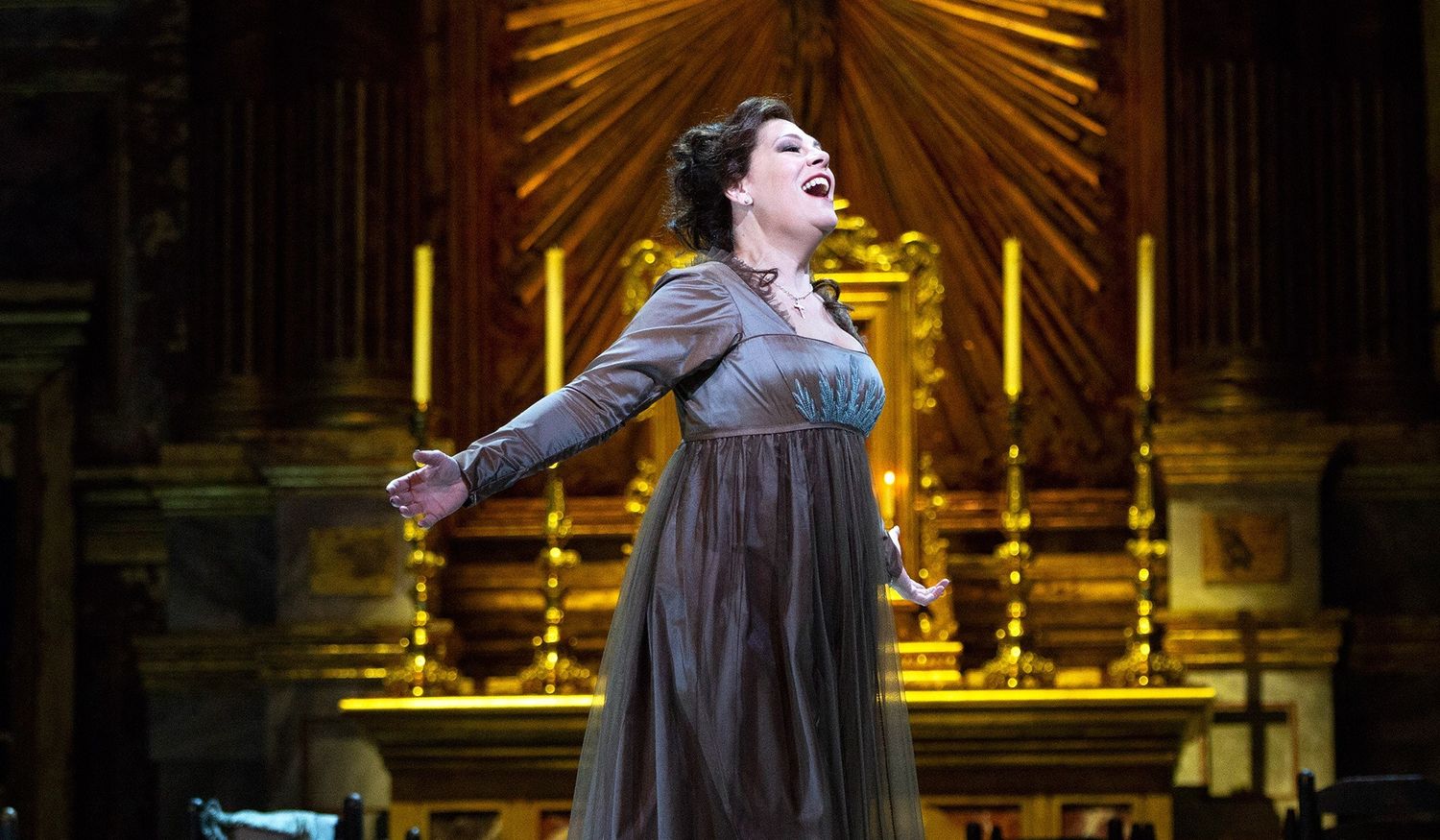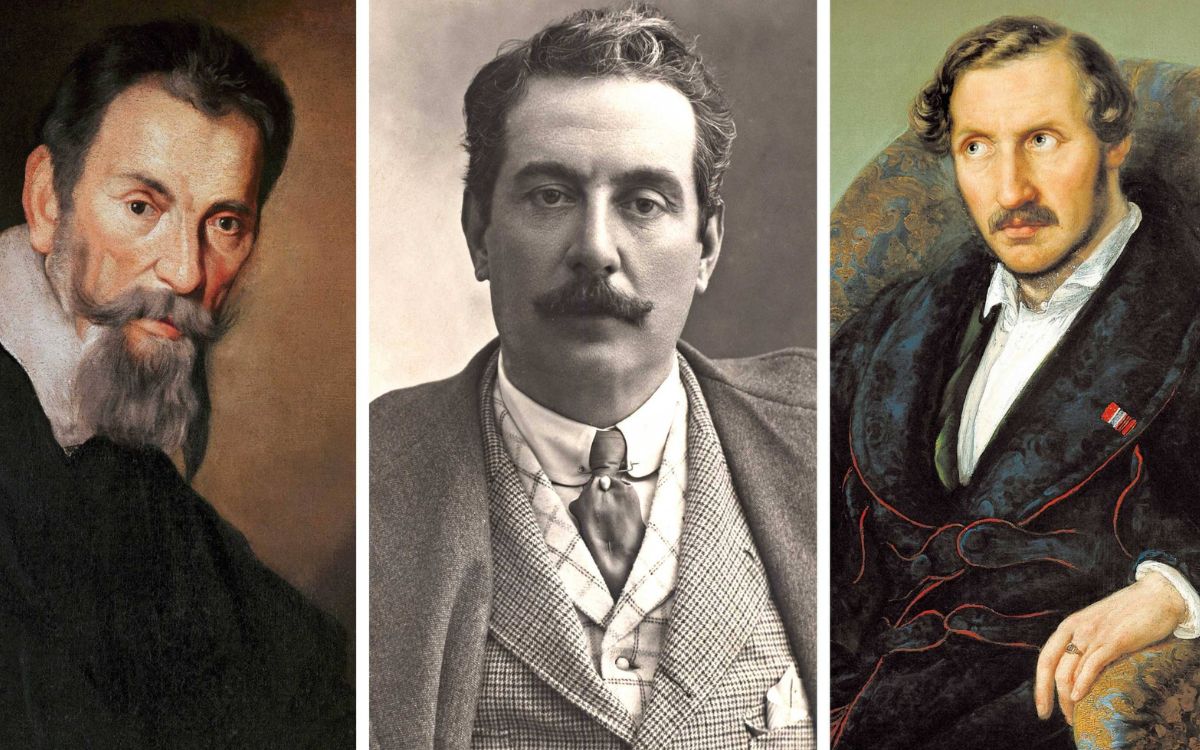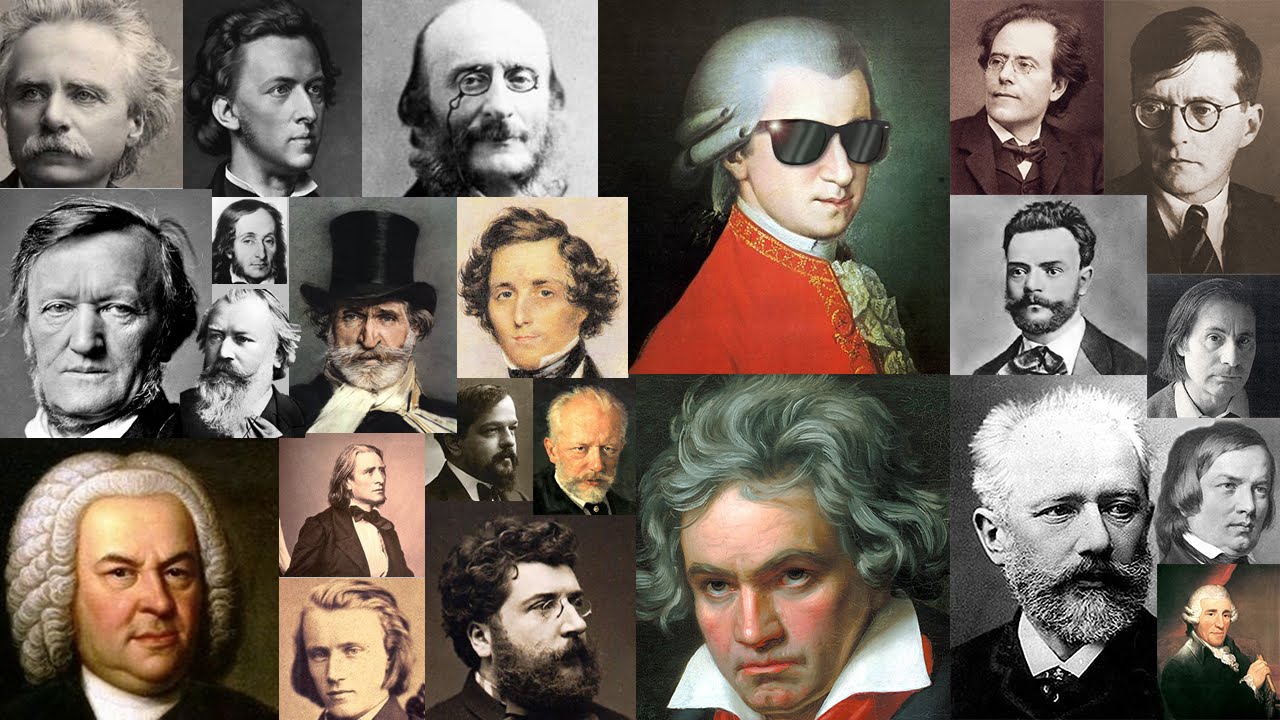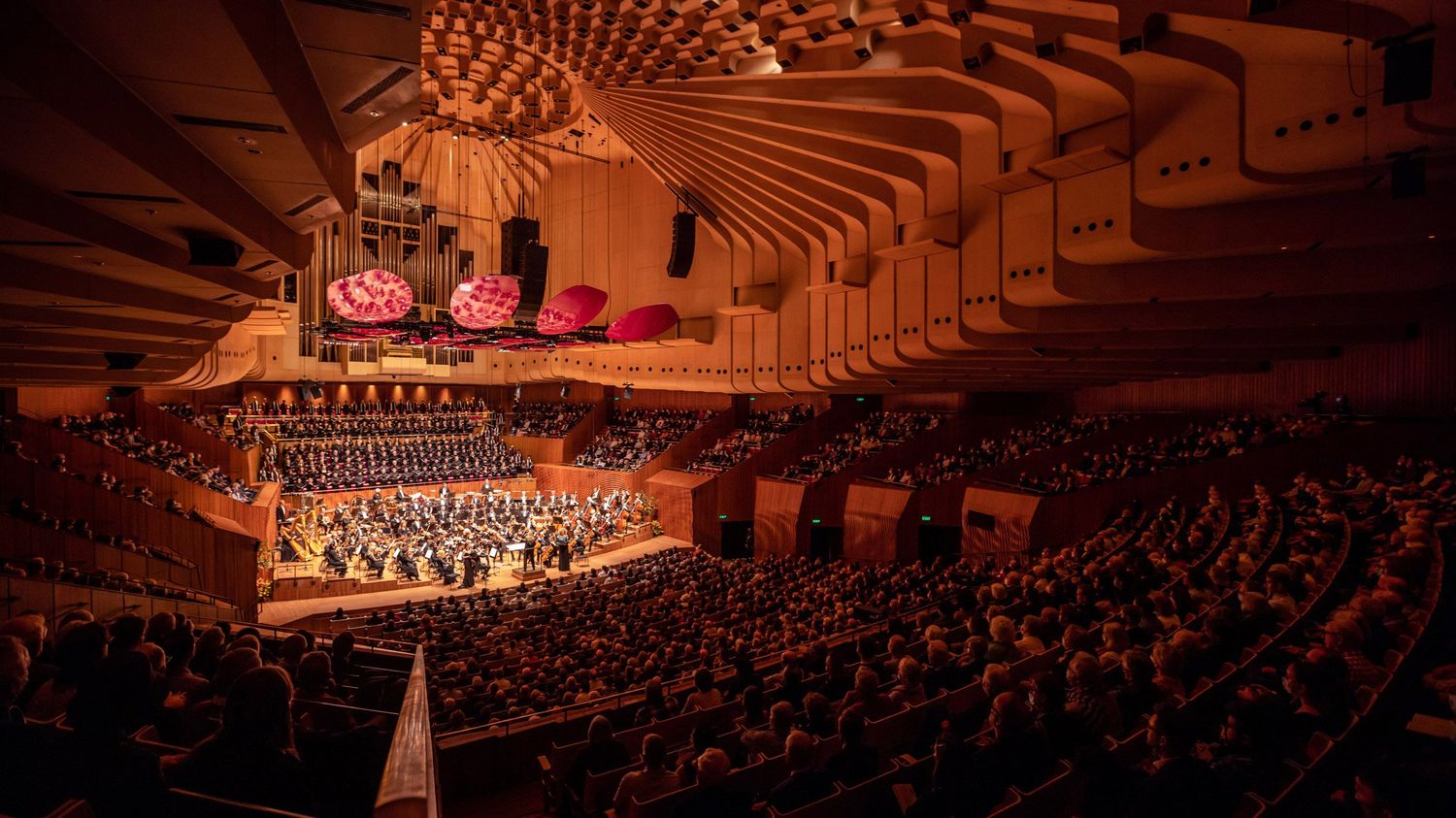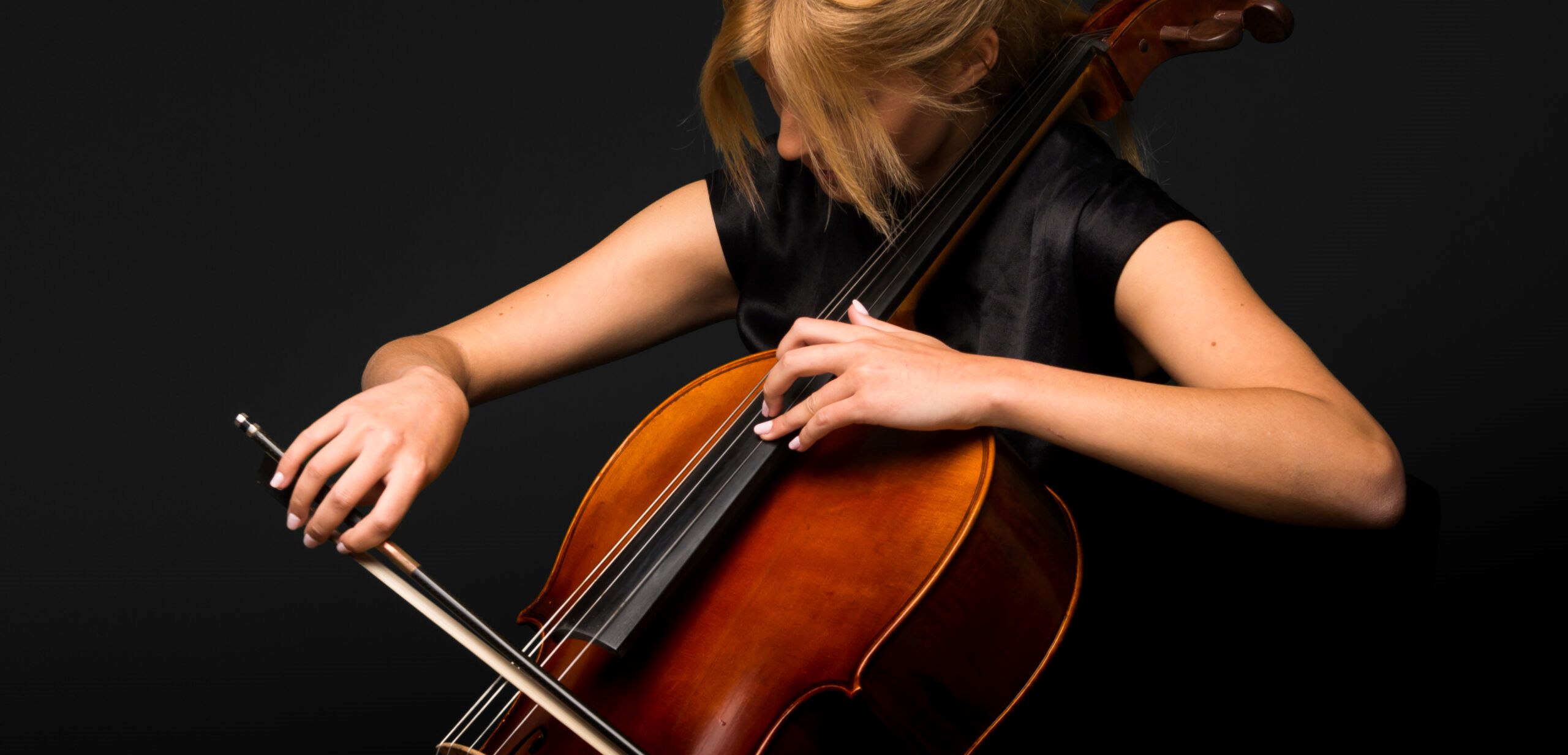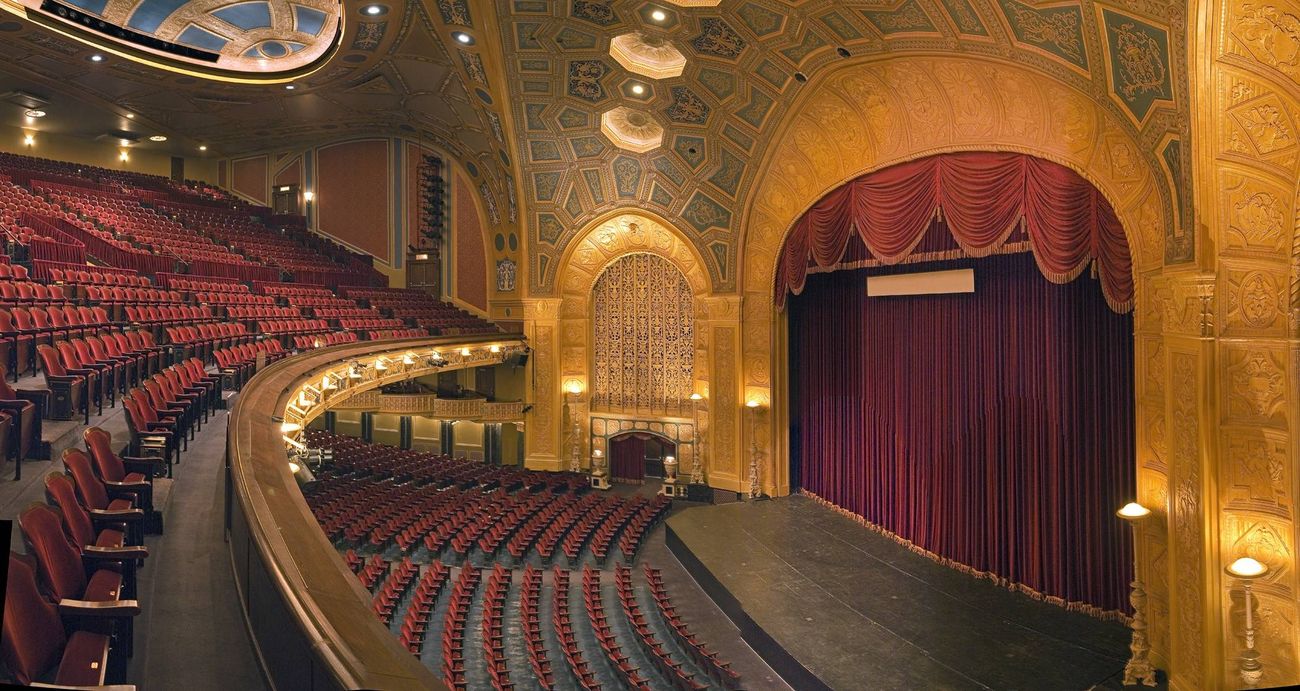Home>Events & Info>Opera>What Is The Most Famous Opera House In The World


Opera
What Is The Most Famous Opera House In The World
Modified: February 24, 2024
Discover the most famous opera house in the world and explore the captivating world of opera. Immerse yourself in breathtaking performances and rich cultural history.
(Many of the links in this article redirect to a specific reviewed product. Your purchase of these products through affiliate links helps to generate commission for AudioLover.com, at no extra cost. Learn more)
Table of Contents
History of Opera Houses
Opera houses have a rich and fascinating history that dates back several centuries. These magnificent venues were created to showcase the art form of opera, which combines music, theater, and storytelling in a powerful and emotive way. The first opera house, the Teatro San Cassiano, was built in Venice, Italy in 1637, providing a permanent space for theatrical performances and emerging as the birthplace of opera as we know it today.
Over time, the popularity of opera grew, leading to the construction of more elaborate opera houses across Europe and eventually around the world. These grand institutions became symbols of wealth, power, and cultural prestige, with each city striving to build the most impressive and prestigious opera house.
Opera houses became hubs for artistic expression, attracting renowned composers, singers, and performers from all over the world. These spaces were meticulously designed to enhance the acoustics and provide optimal viewing angles for the audience, ensuring an immersive and captivating experience.
During the 19th and early 20th centuries, opera reached its peak popularity, with opera houses becoming essential cultural landmarks in major cities. Many of these historic opera houses still stand today, meticulously preserved and cherished for their architectural beauty, historical significance, and contribution to the world of performing arts.
With the advent of new technology and changing audience preferences, the prominence of opera houses has evolved. While some continue to host traditional opera productions, many have expanded their repertoire to include ballet, orchestral concerts, and even contemporary performances.
Today, opera houses not only serve as cultural institutions, but also as tourist attractions and symbols of a city’s cultural heritage. They provide a stage for both established opera companies and emerging talents to showcase their craft, enchanting audiences with the timeless beauty and emotional depth of opera.
As we look to the future, opera houses are adapting to the changing landscape of performing arts, embracing innovative technologies and reaching new audiences through digital platforms. While the concept of an opera house remains rooted in tradition, it continues to evolve and redefine itself to stay relevant in a modern world.
Factors that Determine Fame
When it comes to opera houses, fame is often measured by a combination of factors that contribute to their prominence and reputation. These factors can vary, but here are some key elements that determine the fame of an opera house:
- Historical Significance: Opera houses that have a long and storied history are often regarded as prestigious and iconic. The age of the opera house, its architectural significance, and the historical performances that have taken place within its walls all contribute to its fame.
- Acoustics and Design: The quality of sound within an opera house is crucial to the enjoyment of the performance. Opera houses with exceptional acoustics that elevate the music and voices of the performers are highly regarded. Additionally, unique and visually stunning architectural designs make an opera house stand out and enhance its fame.
- Repertoire and Productions: The range and quality of productions offered by an opera house greatly impact its fame. Opera houses that consistently deliver outstanding performances, featuring world-class singers, conductors, and productions, gain a reputation for excellence and attract opera enthusiasts from around the globe.
- Location and Accessibility: The location of an opera house can play a significant role in its fame. Opera houses situated in major cultural capitals or tourist destinations are more likely to attract international attention and visitors. Additionally, accessibility in terms of transportation and infrastructure can greatly impact an opera house’s popularity and reach.
- Partnerships and Collaborations: Collaborations with renowned opera companies, orchestras, and international artists can elevate the standing of an opera house. Partnerships that result in co-productions, tours, and joint performances bring a diverse range of talents to the stage and contribute to the fame of the opera house.
- Media Coverage and Reviews: Positive reviews from critics and extensive media coverage can significantly boost an opera house’s fame. Prestigious opera houses that garner favorable attention in the press and receive accolades for their performances attract a wider audience and increase their global recognition.
It is important to note that the fame of an opera house is not solely determined by a single factor but rather a combination of these elements. Opera houses that excel in multiple areas and consistently deliver exceptional experiences to their audiences are more likely to achieve worldwide fame and cement their place in the history of opera.
The Sydney Opera House
The Sydney Opera House is undoubtedly one of the most iconic and recognizable opera houses in the world. Located on the shores of Sydney Harbour in Australia, this architectural marvel has become synonymous with the city’s identity and a symbol of its cultural heritage.
Designed by Danish architect Jørn Utzon, the Sydney Opera House was officially opened in 1973 after a construction period of 14 years. Its distinctive sail-like roofs and stunning waterfront location make it a true masterpiece of modern architecture.
Besides its stunning exterior, the Sydney Opera House is also renowned for its exceptional acoustics and state-of-the-art performance spaces. It comprises multiple venues, including the Concert Hall, Opera Theatre, Drama Theatre, and more, which host a wide range of performances from opera and ballet to theater and concerts.
The Opera House also serves as the home of Opera Australia, the country’s largest opera company, as well as the Sydney Symphony Orchestra. These prestigious performing arts organizations, along with other renowned international companies that regularly visit, contribute to the Opera House’s reputation as a premier destination for opera and classical music lovers.
Furthermore, the Sydney Opera House’s prime location in the heart of Sydney attracts millions of visitors each year. The stunning views of the harbor and the iconic Sydney Harbour Bridge, coupled with its cultural significance, make it a must-visit landmark for tourists from around the world.
Over the years, the Sydney Opera House has played host to numerous significant events and iconic performances. It has welcomed world-renowned artists, including Luciano Pavarotti, Maria Callas, and Plácido Domingo, who have graced its stages and left an indelible mark on its history.
Beyond its role as an opera venue, the Sydney Opera House has also become a hub for cultural and artistic exploration. It offers a diverse range of educational programs and workshops, allowing aspiring artists and the general public to engage with the world of opera and performing arts.
In recognition of its architectural and cultural significance, the Sydney Opera House was listed as a UNESCO World Heritage Site in 2007. This prestigious designation solidifies its place among the most important cultural landmarks in the world.
Overall, the Sydney Opera House’s striking architecture, world-class performances, and cultural significance have made it a global icon. It continues to captivate audiences with its beauty and charm, reinforcing its reputation as one of the most famous and beloved opera houses on Earth.
La Scala, Milan
La Scala, known in Italian as Teatro alla Scala, is one of the most esteemed opera houses in the world. Located in the heart of Milan, Italy, La Scala has a long and illustrious history that spans over two centuries, and it continues to be a haven for opera enthusiasts and lovers of classical music.
Founded in 1778, La Scala has witnessed numerous world premieres of operatic masterpieces by revered composers such as Verdi, Rossini, and Puccini. The theater’s architecture exudes elegance and grandeur, with its gilded interiors and a horseshoe-shaped auditorium that offers excellent acoustics, ensuring an immersive experience for the audience.
Performances at La Scala are known for their exceptional quality and artistic magnitude. The opera house collaborates with world-renowned conductors, directors, and performers, attracting acclaimed artists from around the globe. The prestigious La Scala Chorus and Orchestra add to the allure of the performances, showcasing the deep-rooted musical tradition of the institution.
La Scala is also renowned for its commitment to preserving operatic heritage while also embracing innovative interpretations. The theater often stages classic productions alongside contemporary and experimental works, providing a balance between tradition and artistic exploration.
Beyond the regular opera season, La Scala hosts a variety of other events, including ballet performances, symphony concerts, and recitals by renowned soloists. These diverse offerings contribute to the versatility of the theater and attract a wide range of audiences.
La Scala’s significance extends beyond the stage; it has become an essential part of the cultural fabric of Milan. The annual opening night of the opera season, known as the La Scala Opening Night Gala, is a highly anticipated event in the city’s social calendar, attended by dignitaries, celebrities, and opera aficionados from around the world.
Alongside its artistic achievements, La Scala also operates a theater museum that houses an extensive collection of costumes, set designs, musical instruments, and historical artifacts. This museum allows visitors to delve into the rich history and legacy of the opera house.
La Scala’s influence extends beyond its physical location in Milan. The theater’s performances are broadcast worldwide through radio and television, bringing the magic of Italian opera to millions of people across the globe. Additionally, La Scala’s renowned chorus and orchestra regularly tour internationally, receiving critical acclaim and further enhancing the theater’s reputation.
In summary, La Scala’s rich history, impeccable performances, and architectural grandeur have solidified its place among the world’s most celebrated opera houses. Its enduring legacy continues to captivate audiences and ensures its status as a cultural treasure for generations to come.
The Metropolitan Opera House
The Metropolitan Opera House, often referred to as the Met, is a legendary opera house located in New York City. Founded in 1880, the Metropolitan Opera has established itself as one of the most prominent and influential opera companies in the world, and its opera house is a beacon of the performing arts scene in the United States.
The Met is situated in the vibrant Lincoln Center for the Performing Arts, which is home to numerous other renowned cultural institutions. Its iconic building, designed in a modernist style, stands out with its distinctive glass façade and grand lobby, providing an elegant and contemporary setting for operatic performances.
Known for hosting an extensive repertoire that spans classical masterpieces to contemporary productions, the Met attracts leading opera singers, conductors, directors, and designers from around the globe. Its commitment to artistic excellence is evident in the immersive and visually stunning productions that grace its stage.
The Met’s opera season runs from September to May, presenting a diverse range of opera works from different periods and styles. Audiences can experience the timeless classics by composers such as Mozart, Verdi, and Wagner, as well as notable contemporary works by living composers.
In addition to its opera productions, the Met is also recognized for its innovative use of technology to expand the reach of opera. The Met Live in HD series broadcasts selected performances to cinemas worldwide, allowing audiences to enjoy the live opera experience on the big screen in high-definition.
Moreover, the Metropolitan Opera House boasts a rich history of extraordinary performances and legendary singers. It has been the stage for celebrated artists like Luciano Pavarotti, Maria Callas, Plácido Domingo, and Leontyne Price, who have left an indelible mark on opera history.
The Met’s commitment to accessibility includes offering discounted tickets for students, as well as a variety of educational programs and outreach initiatives to engage and inspire young audiences. The Met Opera Guild provides educational resources, lectures, and workshops to foster a deeper appreciation for opera among the community.
As a cultural institution deeply ingrained in the fabric of New York City, the Metropolitan Opera House holds a special place in the hearts of opera lovers and theater enthusiasts worldwide. Its influence extends beyond the stage, contributing to the city’s vibrant cultural landscape.
The Met Opera House serves as a testament to the enduring power and relevance of opera in the modern age. With its renowned productions, commitment to artistic excellence, and dedication to making opera accessible to all, the Metropolitan Opera House continues to shine as a beacon of the opera world.
The Royal Opera House, London
The Royal Opera House, located in the bustling city of London, is a quintessential institution of the performing arts. Built in 1732, this historic venue has played a vital role in the cultural fabric of the United Kingdom, serving as a showcase for opera, ballet, and other world-class performances.
Situated in the picturesque Covent Garden, the Royal Opera House stands as a testament to architectural splendor. Its grand exterior and opulent interiors exude an air of elegance, providing a fitting backdrop for the exceptional performances that take place within its walls.
The Royal Opera House hosts two renowned resident companies: The Royal Opera and The Royal Ballet. These companies feature some of the most talented and acclaimed singers, dancers, choreographers, and musicians, earning the institution a reputation for excellence and artistry.
The Royal Opera is known for its diverse repertoire, ranging from classic operas such as Mozart’s “The Marriage of Figaro” to contemporary works like Thomas Ades’ “The Tempest.” The company’s commitment to artistic innovation and experimentation has earned it international recognition and a loyal following.
Meanwhile, The Royal Ballet showcases the beauty and grace of ballet through a repertoire that encompasses classical ballets like Tchaikovsky’s “Swan Lake” and modern masterpieces such as Kenneth MacMillan’s “Romeo and Juliet.” The exceptional talent of the company’s dancers and the meticulous staging of productions captivate audiences year after year.
In addition to the mainstage performances, the Royal Opera House offers a wide range of educational programs, workshops, and open rehearsals. These initiatives aim to engage with audiences of all ages and foster a deeper appreciation for the performing arts.
The venue itself underwent an extensive renovation in the late 1990s, which enhanced its facilities and improved the theater experience for patrons. The acoustics of the main auditorium, the Royal Opera House’s centerpiece, were meticulously refined to deliver an immersive and pristine sound quality.
Furthermore, the Royal Opera House has embraced technology and innovation to expand its reach. The BP Big Screens program, for example, broadcasts live performances to outdoor screens across the UK, allowing people to enjoy world-class opera and ballet free of charge in public spaces.
As a cultural landmark in London, the Royal Opera House is cherished not only by locals but also by visitors from around the world. Its proximity to other famous attractions, such as Covent Garden Market and the West End theaters, makes it a vibrant hub for cultural exploration.
The Royal Opera House’s rich history, artistic excellence, and dedication to nurturing talent continue to make it an indomitable force in the world of opera and ballet. By championing creativity and pushing boundaries, it ensures that the performing arts remain dynamic and relevant in the ever-evolving landscape of London’s cultural scene.
Palais Garnier, Paris
The Palais Garnier, located in the heart of Paris, is a true architectural gem and a symbol of French cultural heritage. Built in the 19th century, this opulent opera house is renowned for its architectural beauty, extravagant interiors, and its association with unforgettable performances.
Designed by Charles Garnier and opened in 1875, the Palais Garnier showcases the grandeur of the Second Empire style. Its façade, adorned with exquisite sculptures and ornate details, captures the essence of the era. The interior is equally breathtaking, featuring a grand marble staircase, lavish foyers, and a stunning chandelier that weighs over six tons.
Beyond its architectural splendor, the Palais Garnier is renowned for hosting fantastic operatic and ballet productions. It serves as the home of the Paris Opera, which encompasses both Opéra Bastille and the Palais Garnier, and showcases world-class performances throughout the year.
The Palais Garnier stands as a testament to the opulence and grandiosity associated with opera during the 19th century. The famous auditorium, with its rich red and gold décor, luxurious velvet seating, and exquisite ceiling paintings by Marc Chagall, creates an enchanting atmosphere that transports audiences to a bygone era.
Over the years, the Palais Garnier has been the stage for legendary performances and has welcomed illustrious names such as Maria Callas and Rudolf Nureyev. It continues to attract renowned opera singers, ballet dancers, and orchestras, solidifying its reputation as one of the world’s premier opera houses.
In addition to its historical significance and artistic performances, the Palais Garnier boasts a rich cultural legacy. It has been featured in literature and popular culture, most notably serving as the inspiration for Gaston Leroux’s novel “The Phantom of the Opera.” The opera house’s mystique and allure have captivated imaginations for generations.
Visiting the Palais Garnier is not just about attending a performance; it is also an opportunity to explore its stunning architecture and learn about its history. Guided tours allow visitors to discover hidden treasures, including the breathtaking Grand Foyer, the Library-Museum, and behind-the-scenes areas.
Today, the Palais Garnier continues to be a cultural icon in Paris, attracting tourists and art enthusiasts from all corners of the world. Its grandeur, artistic excellence, and historical significance make it an essential destination for anyone seeking an extraordinary opera experience.
As the crown jewel of Parisian opera houses, the Palais Garnier exemplifies the elegance and splendor associated with the performing arts. Its timeless allure has cemented its place in the cultural canon of not only Paris but the entire world, ensuring its enduring legacy for generations to come.
Teatro Colón, Buenos Aires
The Teatro Colón, located in Buenos Aires, Argentina, is a magnificent opera house that ranks among the world’s most prestigious cultural institutions. With its majestic architecture, world-class performances, and rich history, the Teatro Colón stands as a testament to Argentina’s passion for the arts.
Opened in 1908, the Teatro Colón is renowned for its opulent design and exquisite details. Inspired by the grand opera houses of Europe, the theater features magnificent chandeliers, ornate balconies, and a stunning ceiling painted by renowned Argentine artist Raúl Soldi. It provides a lavish and breathtaking setting for opera, ballet, orchestral performances, and other artistic events.
The Teatro Colón’s reputation extends far beyond its splendid aesthetics. The theater has been graced by acclaimed artists, including legendary soprano Maria Callas and iconic ballet dancer Rudolf Nureyev. It also boasts its own orchestra, the Buenos Aires Philharmonic Orchestra, which contributes to the institution’s exceptional artistic offerings.
Recognized for its commitment to artistic excellence, the Teatro Colón presents a diverse repertoire that spans classic operas, modern compositions, and innovative productions. Its productions are characterized by their exceptional musical caliber, meticulous staging, and impressive sets and costumes, captivating audiences with their beauty and emotional depth.
The Teatro Colón has undergone various renovations over the years, including a major refurbishment in the 2000s, which restored its grandeur and enhanced its facilities. The theater now boasts state-of-the-art acoustics, modern stage machinery, and improved audience amenities, ensuring an unforgettable experience for visitors.
Beyond its exceptional performances, the Teatro Colón also offers guided tours that allow visitors to explore its opulent interiors and learn about its fascinating history. The tours provide insights into the theater’s architectural features, backstage areas, and noteworthy anecdotes from its storied past.
The Teatro Colón’s impact extends beyond the confines of its majestic building. It actively engages with the community through educational initiatives, offering workshops, classes, and programs to foster a deep appreciation for the arts among young people. The theater also hosts outreach events, bringing performances to underserved neighborhoods and broadening access to the world of opera and ballet.
As a cultural landmark in Buenos Aires, the Teatro Colón holds a special place in the hearts of the Argentine people. It is not only a source of pride but also a symbol of the country’s rich artistic heritage and its unwavering commitment to the performing arts.
The Teatro Colón’s grandeur, artistic excellence, and historical significance have earned it a cherished spot among the world’s most esteemed opera houses. It continues to delight audiences with its exceptional performances and serves as a beacon of culture and artistic achievement in Argentina and beyond.
The Mariinsky Theatre, St. Petersburg
The Mariinsky Theatre, located in St. Petersburg, Russia, is a historic and renowned institution with a global reputation for excellence in opera, ballet, and orchestral performances. With its rich history, world-class talent, and stunning architecture, the Mariinsky Theatre stands as a cultural gem in the heart of St. Petersburg.
The origins of the Mariinsky Theatre date back to 1783 when it was founded by Emperor Catherine the Great. Over the years, it has become synonymous with the Russian performing arts tradition, attracting some of the most prominent names in opera and ballet.
The theater’s neoclassical façade and exquisite interiors transport visitors to a bygone era of elegance and opulence. The main auditorium, adorned with gilded decorations and plush red velvet seating, provides a truly enchanting environment for performances.
The Mariinsky Theatre is home to the Mariinsky Ballet, one of the oldest and most esteemed ballet companies in the world. The company preserves the Russian ballet tradition and showcases the highest level of technical mastery and artistry. From timeless classics like Tchaikovsky’s “Swan Lake” to contemporary works, the Mariinsky Ballet captivates audiences with its breathtaking performances.
In addition to ballet, the Mariinsky Theatre is renowned for its opera productions. The Mariinsky Opera delivers powerful performances of both Russian and international repertoire, featuring world-class singers, magnificent sets, and stirring orchestral accompaniment from the renowned Mariinsky Orchestra.
With its close association with legendary composers such as Tchaikovsky, Mussorgsky, and Rimsky-Korsakov, the Mariinsky Theatre has been the birthplace of many iconic operas and ballets. It continues to nurture new talent while preserving its rich artistic heritage.
Beyond its primary location, the Mariinsky Theatre has expanded its presence globally through touring performances and collaborations with leading cultural institutions around the world. Its international tours have brought Russian artistry and cultural diplomacy to audiences on a global scale.
The Mariinsky Theatre is not just a venue for performances; it is an institution dedicated to arts education and preservation. The Mariinsky Academy of Young Singers and the Vaganova Ballet Academy, both affiliated with the theater, nurture and train young talents, ensuring the legacy of Russian opera and ballet for generations to come.
St. Petersburg, with its rich cultural heritage, holds the Mariinsky Theatre in high esteem. The theater’s proximity to other historical landmarks, such as the Hermitage Museum and St. Isaac’s Cathedral, makes it an essential destination for visitors seeking an immersive cultural experience.
The Mariinsky Theatre’s historic significance, artistic brilliance, and dedication to preserving Russian performing arts have garnered it international acclaim. It stands as a testament to the enduring power of music and dance, captivating audiences with its unforgettable performances and solidifying its place among the world’s greatest theater houses.
Conclusion
Opera houses hold a special place in the world of performing arts, captivating audiences with their beauty, acoustics, and the exceptional performances they host. From the Sydney Opera House to La Scala in Milan, the Metropolitan Opera House in New York, the Royal Opera House in London, the Palais Garnier in Paris, the Teatro Colón in Buenos Aires, and the Mariinsky Theatre in St. Petersburg, each opera house brings its unique charm and cultural significance to the global stage.
These extraordinary venues are not only spaces for artistic expression but also symbols of cultural heritage and innovation. They continue to nourish and uphold the traditions of opera and ballet while embracing contemporary adaptations and expanding their reach to new audiences through technology and outreach initiatives.
The fame of an opera house relies on a combination of factors such as historical significance, acoustics and design, repertoire and productions, location and accessibility, partnerships and collaborations, media coverage, and reviews. These elements contribute to the reputation and global recognition of these institutions as world-class destinations for the performing arts.
Opera houses like the Sydney Opera House, La Scala, the Metropolitan Opera House, the Royal Opera House, the Palais Garnier, the Teatro Colón, and the Mariinsky Theatre have become cultural landmarks in their respective cities, attracting not only opera enthusiasts but also tourists from around the world. They serve as beacons of artistic excellence and pillars of cultural identity, contributing to the vibrancy and richness of the cities they call home.
As we navigate the ever-changing landscape of the performing arts, opera houses continue to adapt and evolve, finding innovative ways to engage with audiences and remain relevant. They embrace technology, reach new heights of artistic expression, and nurture the next generation of talents, ensuring that the magic of opera and ballet transcends time and continues to mesmerize generations to come.
From the grandeur of their architecture to the captivating performances that grace their stages, opera houses are treasure troves of artistic brilliance. They inspire, entertain, and transport audiences to extraordinary realms of emotion and beauty, leaving an indelible mark on the hearts and minds of those fortunate enough to witness their magic.

